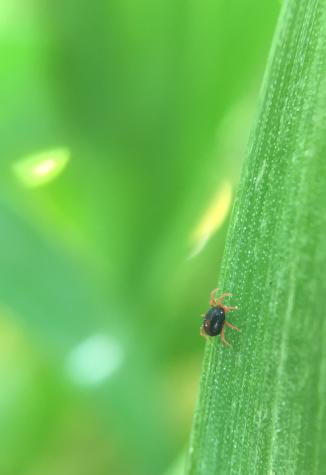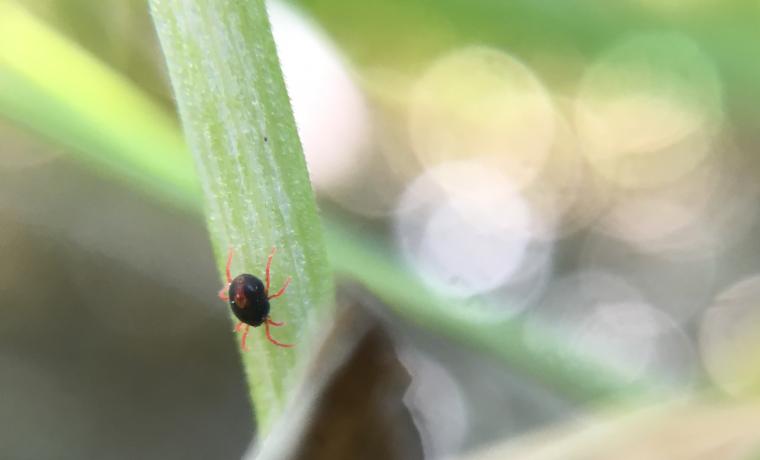LAMAR, Mo. – An unusual pest—winter grain mite—has appeared in southwestern Missouri wheat fields.
“I was scouting wheat fields and saw a small black insect with red legs and thought it was a nest of spiders at first,” said University of Missouri Extension agronomy specialist Jill Scheidt. “Then I began to see them everywhere by the thousands and knew it was something else.”
Scheidt scouted several fields in southwestern Missouri to confirm that the pest lived in more than just the one field.
She contacted MU Extension field crop entomologist Kevin Rice, who could find no previous reports of the pest in Missouri. A local crop consultant told Scheidt that he had seen them several years ago, but not in the densities she described.
The winter grain mite is a pest of small grains and grasses. The mites are 1 mm in length and have black bodies with distinct reddish-orange legs. A telltale identifier is an anal pore on the upper surface of the abdomen that can be viewed with a hand lens. The pore looks similar to a water droplet on the mite’s back.
There are generally two generations per year, Scheidt said. The first begins early fall through December. The second, more populous generation occurs from March to May. Winter grain mites are most active on cloudy days when temperatures range from 40 to 70 degrees Fahrenheit.
They feed on plants by piercing the leaf and stippling plant cells, Scheidt said. Injury to plants results in leaves taking on a gray to silver cast. Heavily damaged plants have brown leaf tips. Damage can progress to kill the entire plant.
“In reading other publications,” she said, “I found that winter grain mites are more common in continuously planted wheat fields with minimum tillage. This threw me off a bit, as the scouted fields are rotated and some are even tilled. The dry, cool weather may have attracted them.” Crop rotation and minimum tillage help to break the cycle if infestations are heavy.
If growing conditions favor wheat development, winter grain mites usually do not cause economic damage. However, high infestations coupled with dry growing conditions or nitrogen deficiency can cause significant damage. Heavy rains help to reduce populations.
There are no established threshold levels for treatment, but Scheidt says growers should consider an insecticide application if large populations are present and visible symptoms appear on leaves.
Scheidt and Rice recommend that wheat growers monitor winter grain mites over the next few years. “They may not be a problem now, but it could take a few years for them to establish and cause economic damage,” said Rice.
For more information, contact Jill Scheidt at the MU Extension Center in Barton County, 417-682-3579, or contact your local MU Extension center.
Photos available for this release:
Winter grain mite
University of Missouri Extension agronomy specialist Jill Scheidt found the winter grain mite in southwestern Missouri wheat fields in April. Photo by Jill Scheidt.
Winter grain mite
The winter grain mite, a pest of small grains and grasses, has a black body and distinct reddish-orange legs. Photo by Jill Scheidt.

